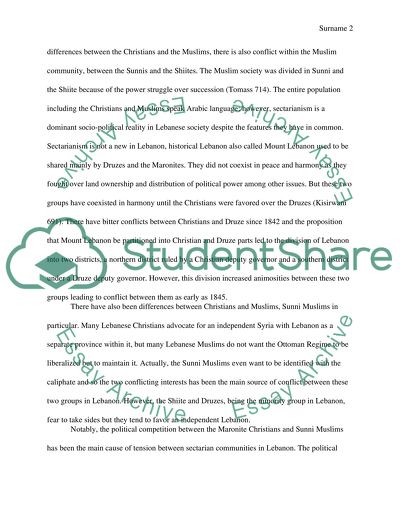Cite this document
(“Religious Conflicts in Lebanon Essay Example | Topics and Well Written Essays - 2500 words”, n.d.)
Retrieved from https://studentshare.org/social-science/1669091-religious-conflicts-in-lebanon
Retrieved from https://studentshare.org/social-science/1669091-religious-conflicts-in-lebanon
(Religious Conflicts in Lebanon Essay Example | Topics and Well Written Essays - 2500 Words)
https://studentshare.org/social-science/1669091-religious-conflicts-in-lebanon.
https://studentshare.org/social-science/1669091-religious-conflicts-in-lebanon.
“Religious Conflicts in Lebanon Essay Example | Topics and Well Written Essays - 2500 Words”, n.d. https://studentshare.org/social-science/1669091-religious-conflicts-in-lebanon.


